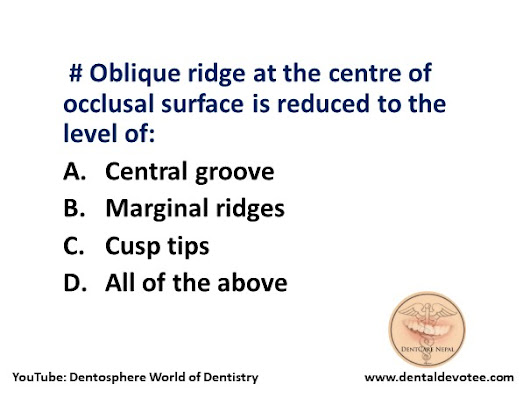# Oblique ridge at the centre of occlusal surface is reduced to the level of:
A. Central groove
B. Marginal ridges
C. Cusp tips
D. All of the above
The correct answer is B. Marginal ridges.
The oblique ridge is a ridge that crosses the occlusal surface obliquely. The union of the triangular ridge of the distobuccal cusp and the distal ridge of the mesiolingual cusp forms it. This ridge is reduced in height in the center of the occlusal surface, being about on a level with the marginal ridges of the occlusal surface. Sometimes it is crossed by a developmental groove that partially joins the two major fossae by means of its shallow sulcate groove.







